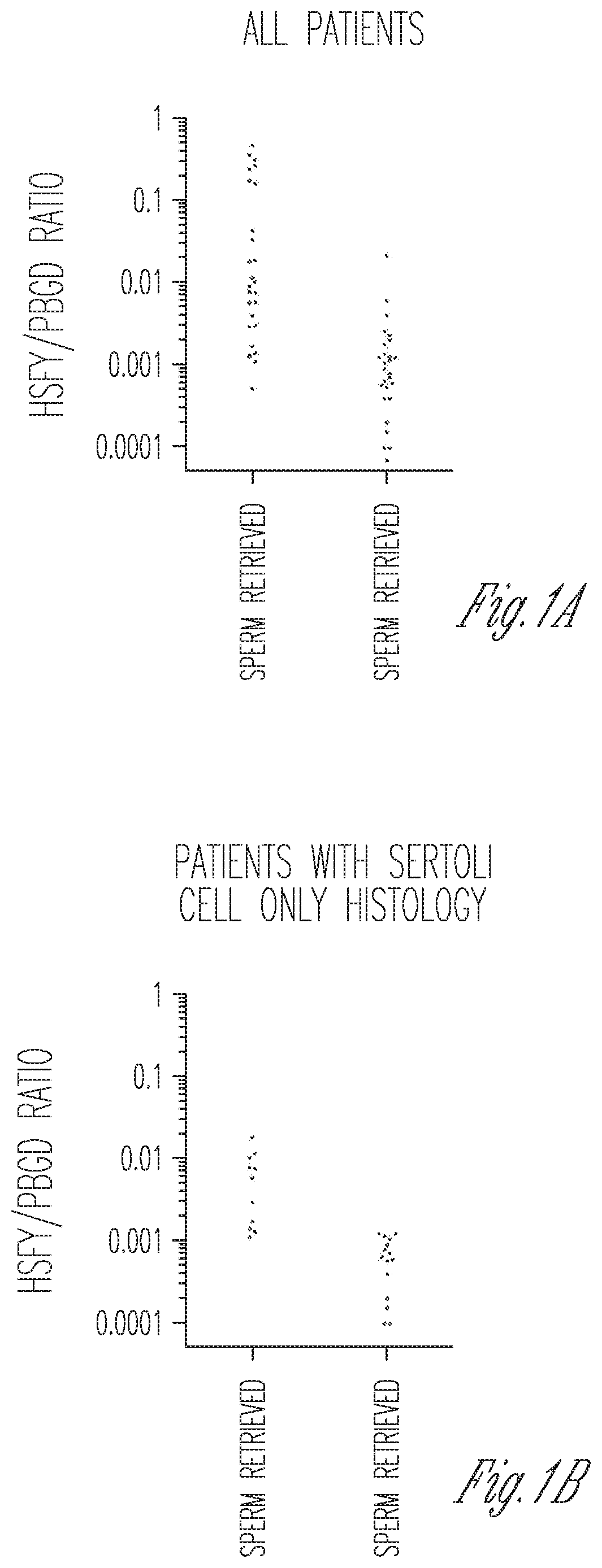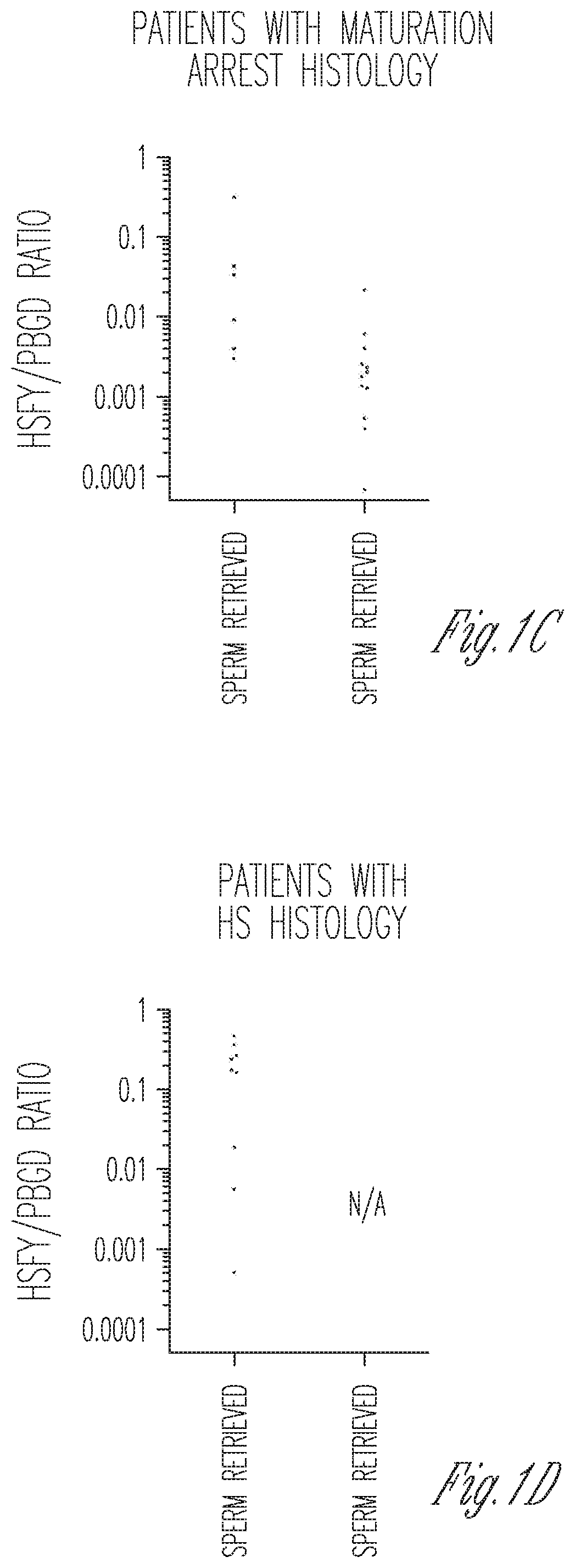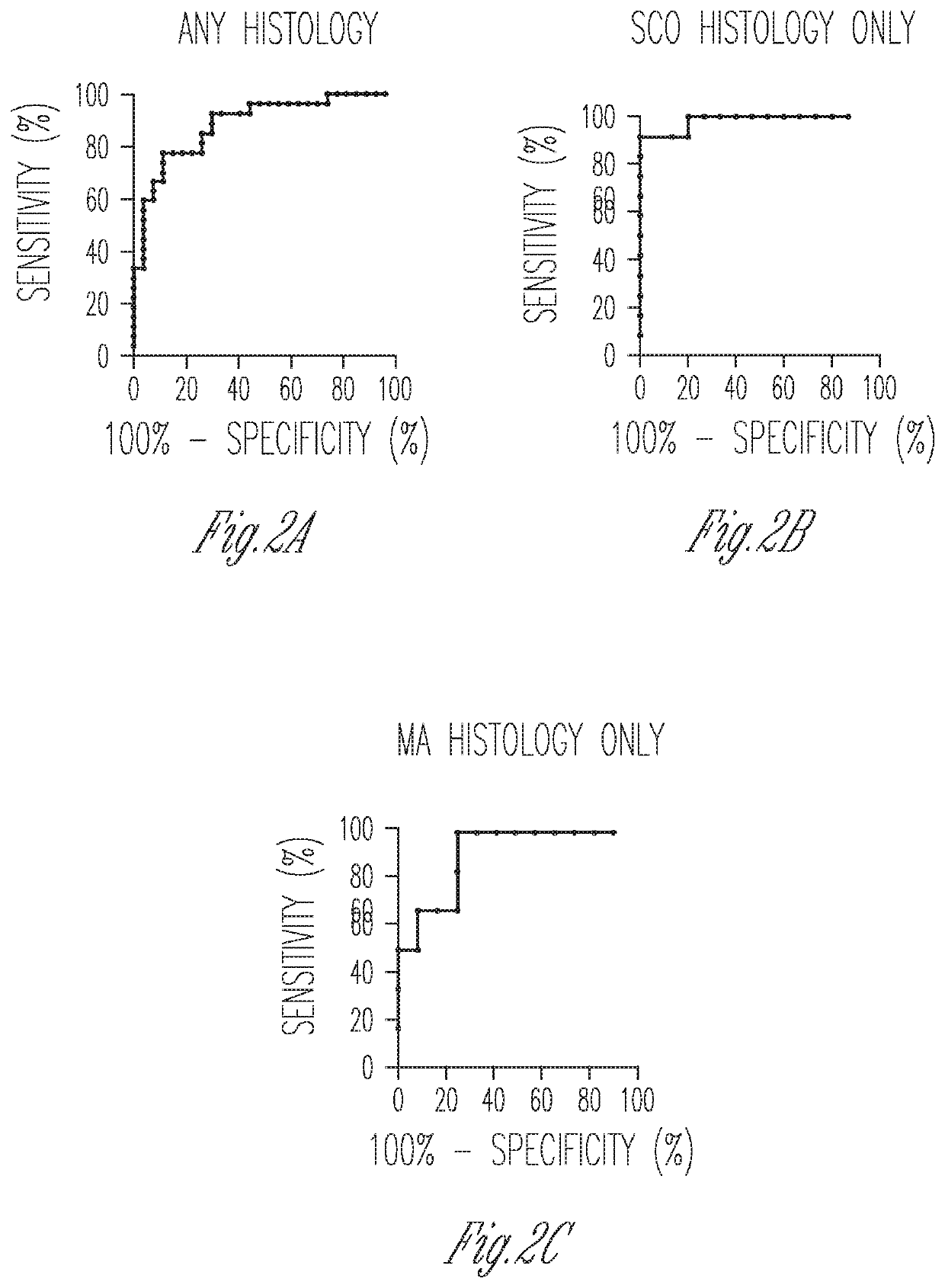Method for successful retrieval of sperm
a technology for retrieving sperm and sperm cells, applied in the field of successful retrieval of sperm, can solve the problems of inability to reliably predict the presence of retrievable testicular sperm, incurring its associated risks and inconveniences, and needlessly incurring morbidity, psychological stress and financial expense, etc., and achieves a high degree of sensitivity and specificity.
- Summary
- Abstract
- Description
- Claims
- Application Information
AI Technical Summary
Benefits of technology
Problems solved by technology
Method used
Image
Examples
example 1
election, Sample Acquisition and Handling Procedures
[0084]Patients.
[0085]The Institutional Review Board of the Weill Cornell Medical College approved this study. The study population was comprised of 54 men with nonobstructive azoospermia who underwent microdissection TESE. Nine men with azoospermia who underwent testicular sperm extraction served as controls. Patients were selected based upon availability of well-preserved testicular biopsies for pathologic analysis and availability of testicular tissue for research. Preoperative clinical evaluation included history, focused physical examination including measurement of testis size with an orchidometer, semen analysis, serum FSH level, karyotype analysis, and Y chromosome microdeletion testing.
[0086]Sperm Retrieval.
[0087]Azoospermia was confirmed on the day of planned sperm retrieval by microscopic analysis of ejaculated semen after centrifugation. Bilateral microdissection Micro dissection TESE was performed as has previously been...
example 2
ive Analysis of HSFY mRNA Expression
[0092]Frozen seminiferous tubular tissue for RNA extraction was thawed and weighed. Tissue was homogenized using a Polytron PT-10 / 35 Homogenizer (Kinematica Inc, Lucerne, Switzerland). Total RNA was extracted in one step with Trizol LS Reagent (Invitrogen Corp., Carlsbad, Calif., USA) according to manufacturer specifications. To remove any contamination with genomic DNA, extracted RNA was incubated with RNase-free DNase for 30 minutes (Qiagen Inc., Hilden, Germany) and purified using a commercially available RNA-binding spin column (RNeasy Mini Kit, Qiagen Inc., Hilden, Germany) according to manufacturer instructions. RNA concentration was measured spectrophotometrically at 260 nm with the Life Science UV / Vis DU 530 spectrophotometer (Beckman Coulter, Inc., California, USA). RNA purity was confirmed by measurement of the A260 / A280 ratio. cDNA was synthesized from 1 microgram of purified total RNA with random hexamer primers using the Transcriptor ...
example 3
nt In Situ Hybridization (FISH)
[0096]Validation of the qRT-PCR assay was performed with FISH using testicular tissue from two patients with azoospermia and two nonobstructive azoospermia patients with Sertoli cell only histology who failed microdissection TESE. Frozen embedded testis tissue was cryosectioned at 5 micrometer thickness and placed on a glass slide. Slides were fixed with 4% buffered paraformaldehyde and permeabilized with 0.05% pepsin / 10 mM HCl solution. Sections were post-fixed in 1% paraformaldehyde, dehydrated with a sequential series of ethanol washes, incubated in 70% formamide / 2×SSC buffer solution, and dehydrated again with ethanol. Hybridization was performed using a labeled DNA probe that we synthesized. Forward and reverse primers were designed with the National Center for Biotechnology Information (NCBI) blast primer design program (see website at www.ncbi.nlm.nih.gov / tools / primer-blast / ) for amplification of a 426 bp fragment of HSFY mRNA (forward primer 5′...
PUM
| Property | Measurement | Unit |
|---|---|---|
| thickness | aaaaa | aaaaa |
| concentration | aaaaa | aaaaa |
| weight | aaaaa | aaaaa |
Abstract
Description
Claims
Application Information
 Login to View More
Login to View More - R&D
- Intellectual Property
- Life Sciences
- Materials
- Tech Scout
- Unparalleled Data Quality
- Higher Quality Content
- 60% Fewer Hallucinations
Browse by: Latest US Patents, China's latest patents, Technical Efficacy Thesaurus, Application Domain, Technology Topic, Popular Technical Reports.
© 2025 PatSnap. All rights reserved.Legal|Privacy policy|Modern Slavery Act Transparency Statement|Sitemap|About US| Contact US: help@patsnap.com



